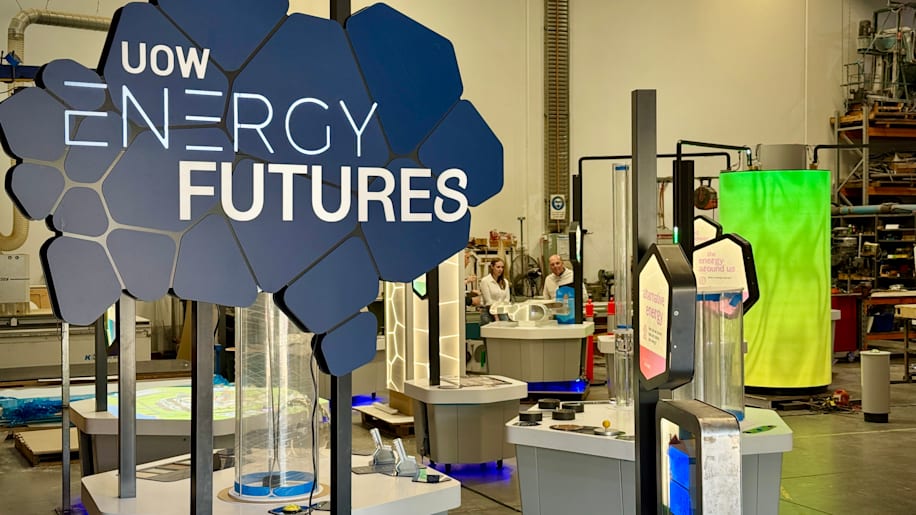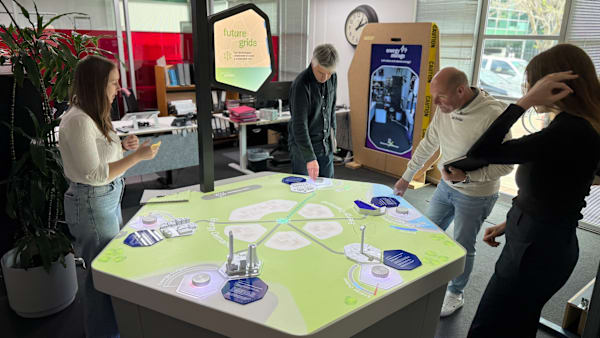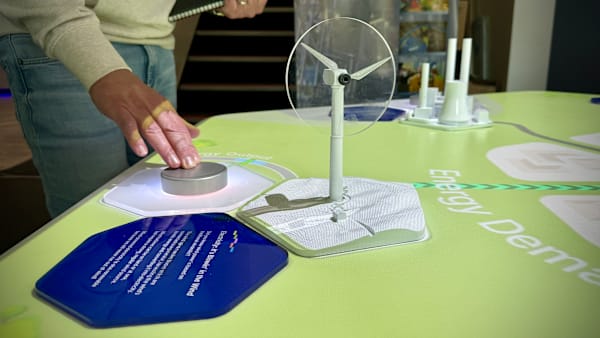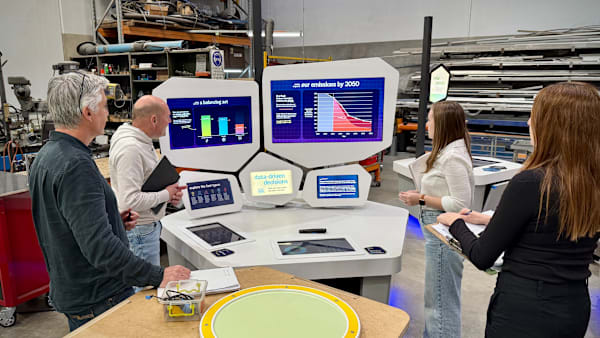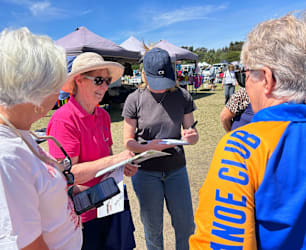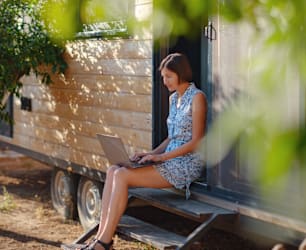Look out, Questacon – just in time for the summer holidays, Wollongong’s Science Space will welcome interactive new exhibits to rival those at Australia's national science centre and demystify the energy system at a record-breaking time, when almost half of our grid is running on renewables.
“It's a refit of almost the entire upper floor of the Science Space at the Innovation Campus here at the University of Wollongong,” says Energy Futures Network Director Ty Christopher. “When this is finished, Questacon will be envious as to how cool, funky and amazing it looks.
“The exhibits are going to be highly interactive. This isn't a museum that you walk through and just look at things.
“This is tactile. This is something you're immersed in from the moment you arrive. These are exhibits that you've got to put your hands on. You've got to turn knobs, you've got to turn dials. You've got to do things with them in order to find the information that they're conveying to you.”
Education will come in the form of games, from firing a single bead for mechanical power to running a multiplayer city challenge to keep the lights on.
“They're aimed at adults, teenagers and children, and that gamification really works,” Ty says.
A South Australian company called Exhibition Studios is making the exhibits, but UOW experts, including Ty, Science Space Director Stuart Creal and early learning academics, have briefed them. For Ty – who ended a four-decade industry career as Endeavour Energy’s ‘chief engineer’ – switching from designing state-size power systems to child-size exhibits has been a career high.
“Who does not want to design cool toys – the dream of every engineer,” he says, laughing.
One of his favourites will take teamwork.
“A really interesting one for me, as an energy geek, is there's a city, and that city is powered by a mix of energy sources – gas, electricity from the sun, wind batteries, a coal-fired power plant as well. You need about five people to run this exhibit, and they've all got to be working on their particular generation source to make sure that that city is powered reliably and safely.
“It gives people a really good perspective on how our energy grid operates at the moment, about it being a delicate tightrope balancing act between matching what we need in our energy every instant of every second of every day, with the need for generation, whether it's from solar, wind, coal, gas, batteries, you name it.”
Let it flow
Whether generating electricity via waves, wind, solar or good old bicycle pedal power, all the energy exhibits will be linked in one “really exciting” way.
“They all connect to this huge central battery,” Ty says. “As they're generating energy during the day, this battery will fill up, and then once it reaches a certain level, you'll be able to hit, ‘okay, discharge the battery’, and the energy will flow out and light up exhibits and power everything.”
The new exhibits will be on the top floor of Science Space, but won’t displace the popular dinosaurs or construction play zone. They also won’t add to entry costs as the additions are funded by about $3 million of a $10m grant UOW received from the federal government for its Energy Futures Skills Centre in October 2022.
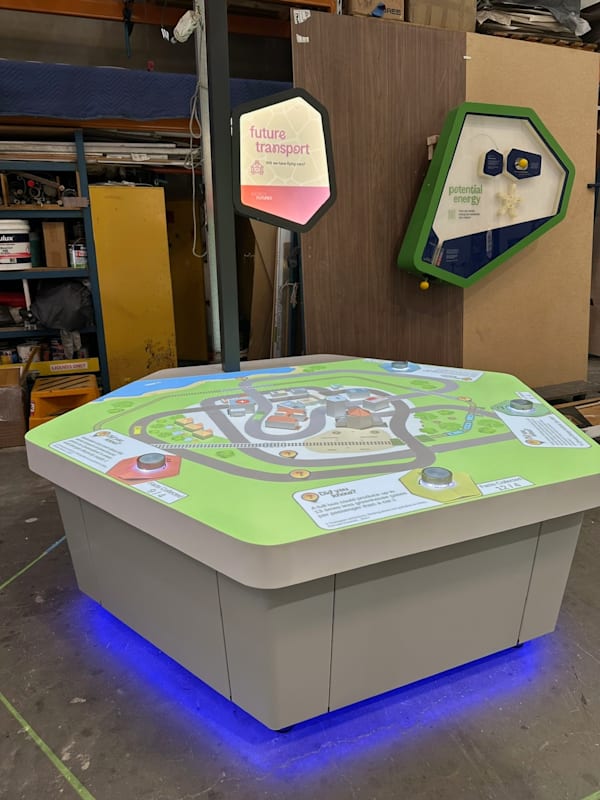
Exhibits for all abilities
The new exhibits will be for all abilities and allow players to experiment (use yourself a battery, for example) and explore which materials generate the most voltage or what’s the best energy mix for future transport. Everyone can play around with wave energy, solar power and Wollongong’s most controversial renewable – wind – by trialling different blades.
“The more blades that you attach, and the different types, you'll get different outputs in terms of the wind generation by directing the wind gust to it,” Ty says.
Fans of the Illawarra-led movement to ‘Electrify Everything’ may like to try configuring a mini house, its trees and solar panels, to experiment with time and seasons to understand how variable solar on homes can be.
Amid all this, there’s a nice symmetry with the Science Space building itself – it’s one exhibit to rule them all.
“We've covered the roof of the Science Space with solar panels and installed a huge battery in the side,” Ty says. “What that means is the Science Space itself has now become an energy-neutral building in and of itself, which is great for its sustainability, environmentally, and financially, I might add.
“We've turned the operation of the building and its own energy use into a major exhibit. So when people are physically within the building, seeing all of these things going on – seeing lights and flashing things, and all of the energy being used by the building – they can actually see how that's being powered in real time, by the solar panels or by the battery, or a mix of both, while they're physically in the building.”

Aims of the $3m refit
There is a serious side to science fun and the refit has three goals.
“The first one being helping people to understand energy … without telling them what they should think, just giving them information to make up their own minds,” Ty says.
“The second aim is to encourage and promote and fan the flames of enthusiasm in young people to pursue careers in STEM in general, and energy as it relates to STEM, in particular. Yes, it's recruitment for the university, but it's also what our nation needs.
“Then the third aim of it is to be helping teachers deliver curriculum.”
Overall, Ty hopes to help educators tackle one of the biggest challenges in energy transformation – the subject’s complexity.
For many people, he says, thinking about electricity doesn’t go beyond: “Can I afford it, and is my water hot and my beer cold?
“That's fair enough. People lead tremendously busy lives. We're bombarded from all sides, with all sorts of information, and, dare I say, a lot of deliberate disinformation. It can very quickly become very overwhelming.
“So the aim of it all is to be something that is accessible, is understandable, is appealing to very young audiences as well as older audiences.”

‘Australia is leading the world’
He’s glad to work with an Australian company to bring the vision to reality.
“That, for me, is extra special, because Australia is leading the world in this energy transformation with what we're doing, particularly with solar on our homes and our batteries as well.
“We have a grid that is running almost 50% on renewables. Just a couple of weeks ago, the East Coast grid in Australia hit a record 71% running on renewables for several hours in an afternoon, and that's not a message many people know about.
“It's certainly not one that some of the naysayers in the fossil fuel industry want getting out there – the fact that the grid works quite well with almost three-quarters of the energy coming from renewables, and the lights stay on, and everything's perfectly reliable.
“So it's about helping demystify all of that for people, and really aid in understanding, but not in any of it, preach or proselytise to people.
“Rather to just be saying, here's the facts.
“I think that is something that is increasingly a challenge and absent.”
Ty is speaking on the cusp of the seasons, as Australia’s news cycle is changing from catastrophic algal bloom imagery to footage of spring bushfires, and shortly after US President Donald Trump told the United Nations General Assembly that climate change was “the greatest con job ever”, a claim since widely debunked.
“When we have the leader of what has traditionally been regarded as the greatest and largest democracy in the world pathologically lying,” Ty says, "the more that we can get out there that's rational and based on fact and science, the better.”
October 13-19 is Global Climate Change Week at UOW and local libraries will host events too. For a calendar, visit UOW's website

